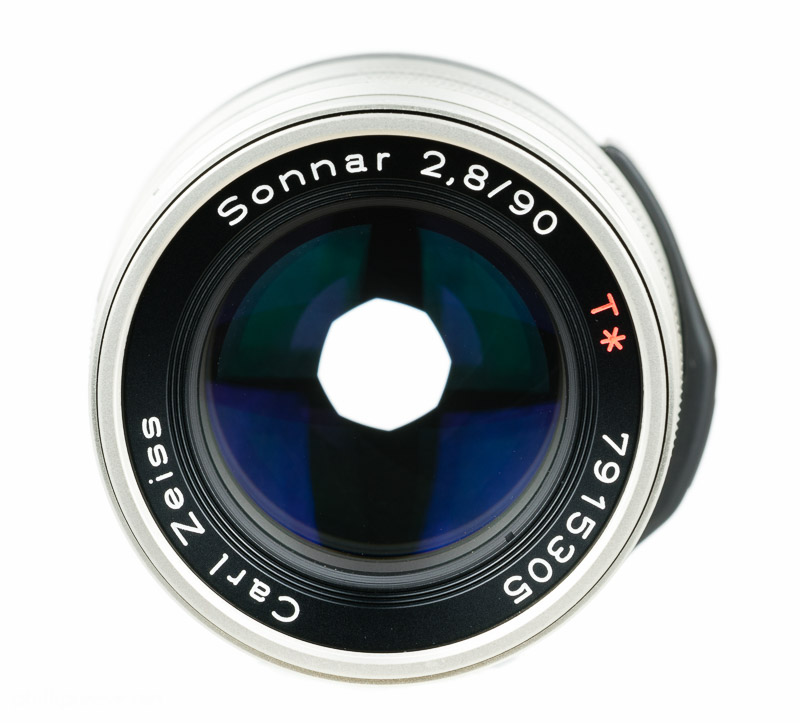
The specs of the Carl Zeiss Sonnar 2.8/90 sound great: Small, cheap, it’s from Zeiss so it should be very sharp and with the right adapter it even offers AF on the a7II! So how will it actually perform? Read on if you want to know.
Thanks to Uwe for loaning me the lens and Techart adapter for this review!
Sample Images
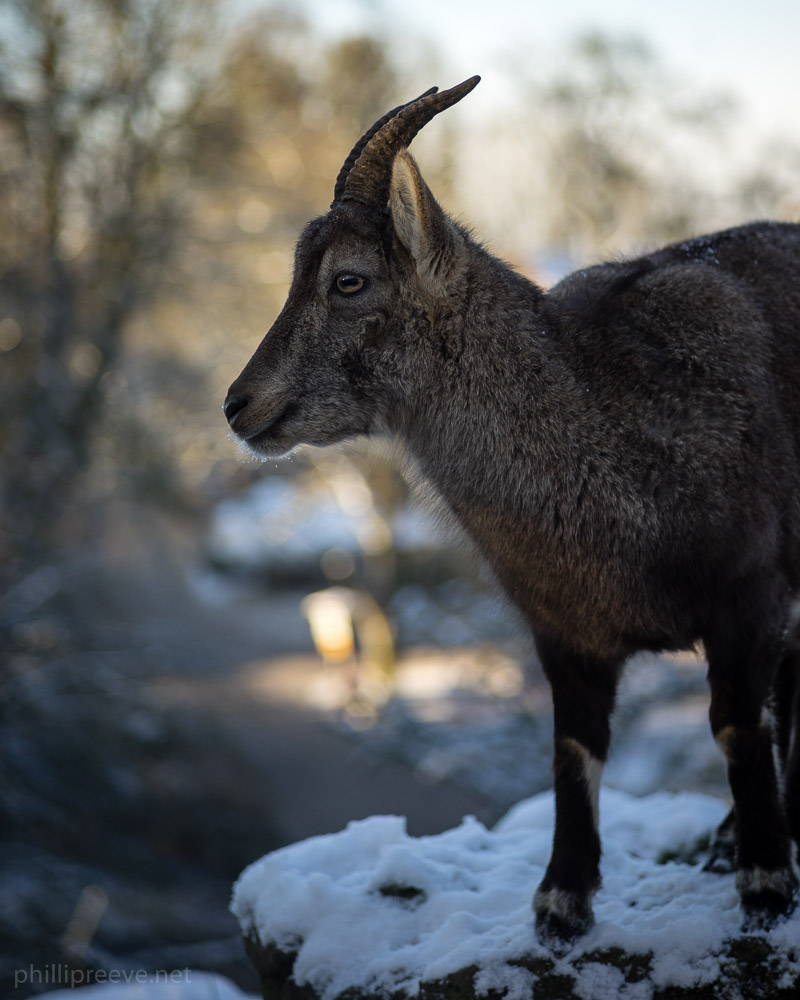


Specifications
-
- Diameter: 56mm
- Length: 63mm
- Weight: 240g
- Filter Diameter: 46mm
- Number of Aperture Blades: 8
- Elements/Groups: 5/4
- Close Focusing Distance: 1m
- Mount: Contax G
More information in Zeiss’ official data sheet.
The Carl Zeiss Sonnar 2.8/90 usually sells for around $140-200 at ebay.com (affiliate link).
In Germany you can buy it for 130-190€ at ebay.de (affiliate link).
The rarer black version sells for quite a bit more.
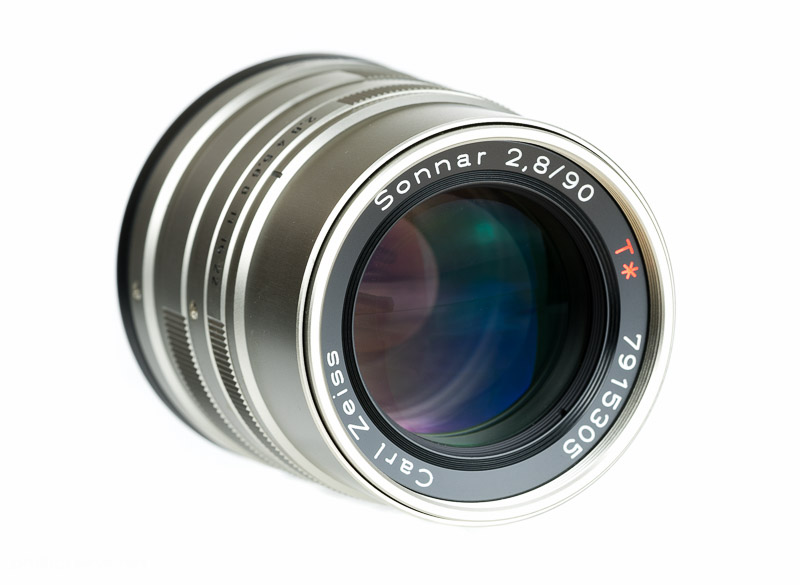
Versions
There is only one version of this lens. It comes in two colors: Titan and black but the black version is much rarer and therefore more expensive.
The optical design of the Sonnar 2.8/90 is very closely related to the Zeiss Sonnar 2.8/85 with Zeiss C/Y mount.
The Sony 2.8/85 A-mount is rumored to have the same optical design as the Zeiss 2.8/90 and the cross section does indeed look nearly identical. The big difference is the build quality, the Sony is made from plastics and feels very cheap while this lens is very well made.
Compatibility
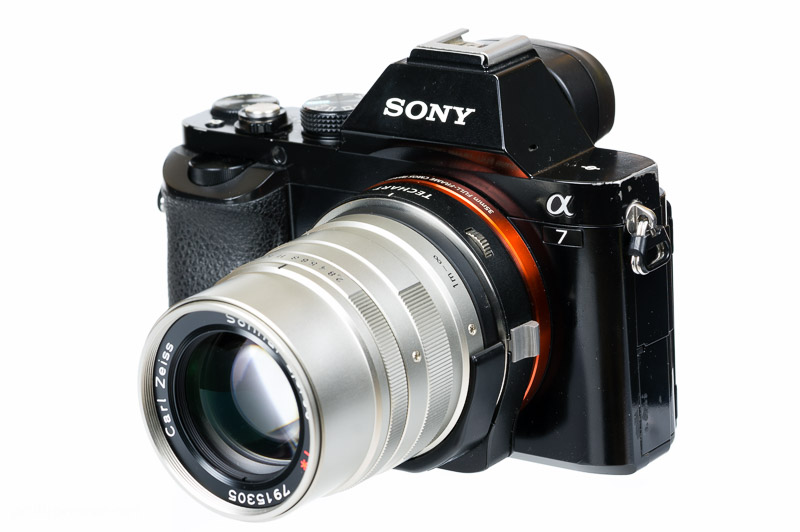
The Zeiss Sonnar 2.8/90 was originally developed in the mid 90’s for the Contax G1 and it’s successor the Contax G2. Both are AF rangefinder cameras.
Adapting Contax G lenses to modern digital cameras comes with two challenges. Since the Contax G cameras have a rather short flange focal distance of just 29mm you cannot adapt them to DSLRs. The advantage of this short flange focal distance is that adapters for mirrorless systems are only about 11mm thick. The other problem is that the lenses do not have a focusing ring, just AF coupling so the adapter must provide some means to focus the lens.
There are two kinds of adapters, purely mechanical and electronic adapters which even provide AF with some Sony Alpha cameras.
Mechanical adapters are available for EOS M, Fuji X, M43 and Sony E-mount. They range in price (affiliate link) from $25 to $140. I own a cheap adapter of the $25 class and it totally sucks, the focusing experience is awful. I have heard good things about the Kipon and Metabones adapters but I haven’t used them personally.
The Techart TA-GA3 adapter is very interesting because you can use AF with newer Sony E-mount cameras! AF with the Sony a7, a7r and a7s is unusable (very slow and unreliable) but with the a7II it works quite okay as long as it isn’t too dark. The AF experience is certainly not as smooth as with native lenses. The screw driven AF is rather loud and while it tracks small changes in focusing distances well it is quite slow to realize larger changes in focusing distance. Reliability was good enough not but not on the same level as the native lenses. It also fails when it is a bit darker in situations where native lenses still work reasonably well. I found it usable in some scenarios but often enough I changed to manual focusing which is realized with a small wheel at the 2 o’clock position. Manual focusing with this method works better than I would have expected but can be a bit fiddly at long distances.
The Techart TA-GA3 adapter sells for about $250 at ebay.com or amazon.com (affiliate links).
Build Quality
The Zeiss 2.8/90 feels very nice and solid.
The barrel is made of metal, supposedly titanium.
All markings are engraved.
The Sonnar is made in Japan.
I did not diasassemble the lens so I can’t tell you how it looks on the inside and how reliable it’s construction is.
Size, Weight and Handling
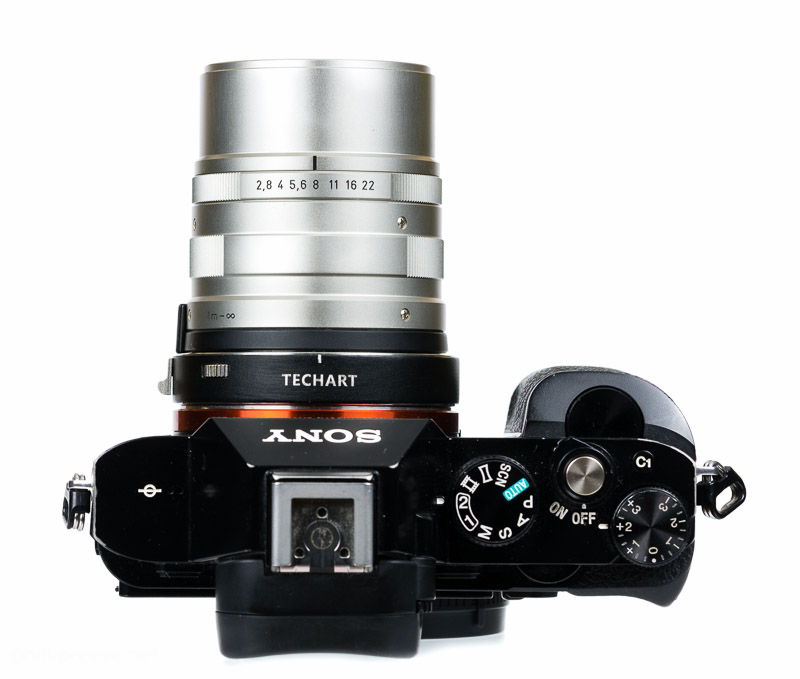
The Zeiss Sonnar is very well well balanced on the Sony a7. At just 240g and with a very small diameter it is less obstrusive than most adapted 50mm lenses.
The Zeiss does not have a focusing ring. How you focus depends on the kind of adapter you use. I used a Techart adapter. To manually focus you turn a small dial which you see to the left of the TECHART branding on the image above. The experience is of course not as nice as with a real focusing ring but it works well enough, I never had the urge to throw adapter and lens into the narest pond. I had that urge quite often with my all manual cheap $25 adapters.
The aperture ring has full stops from f/2.8 to f/22 which register nicely but it isn’t too easy to select half-stops because the aperture ring doesn’t travels very far. If you use the Techart adapter it won’t record the actual aperture you used. You can change the aperture in the camera but all this does is that it overexposes your image by as many stops as you have stopped down (e.g. f/5.6 will result in a 2 stops overexposed image).
Lens Hood
The Contax Metal Hood GG-3 has a little larger diameter than the lens and it is about 33mm deep.
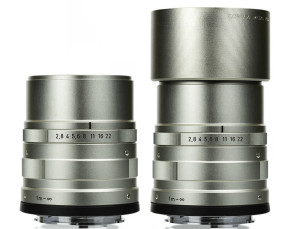
Filters
The 46mm filter thread is made from metal
The front of the lens does not rotate so polarizers are easy to use.
Image Quality
Vignetting
At f/2.8 vignetting is moderate at 1.3 stops and at f/4 is is very low at 0.5 stops. From f/5.6 the lens is virtually free from vignetting (less than 0.3 stops).
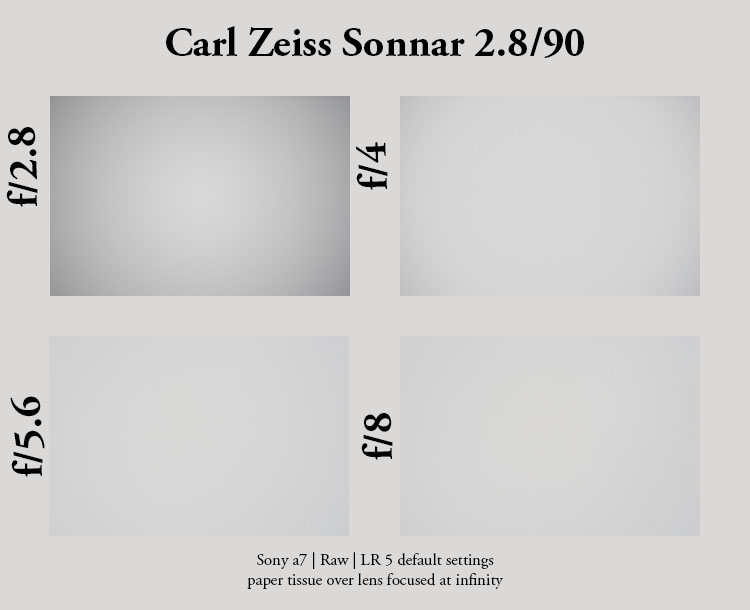
Flare Resistance
The flare resistance of the Zeiss 2.8/90 is good but not perfect. Under extreme conditions you can see some veiling flare which causes contrast loss less demanding situations. I never saw any ghosting.
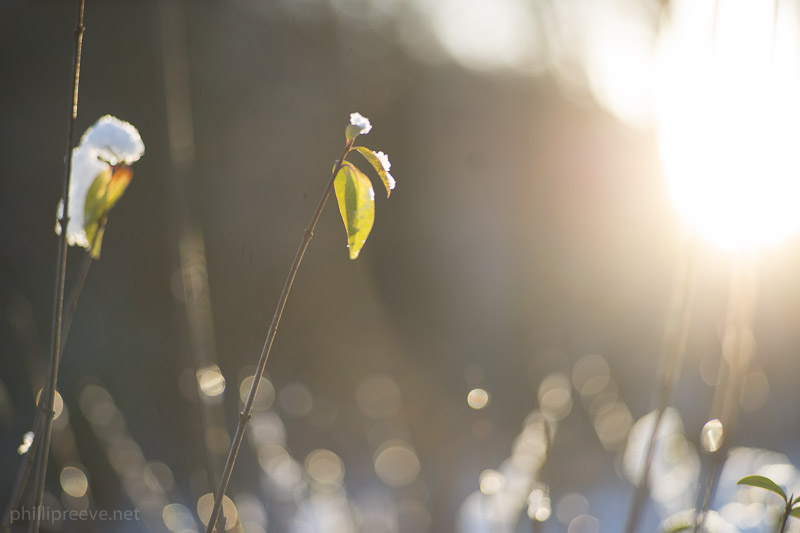

Distortion
The Sonnar shows a very small amount of pincushion distortion, a setting of -1 corrects it very well in Lightroom. So distortion is nothing to worry about.
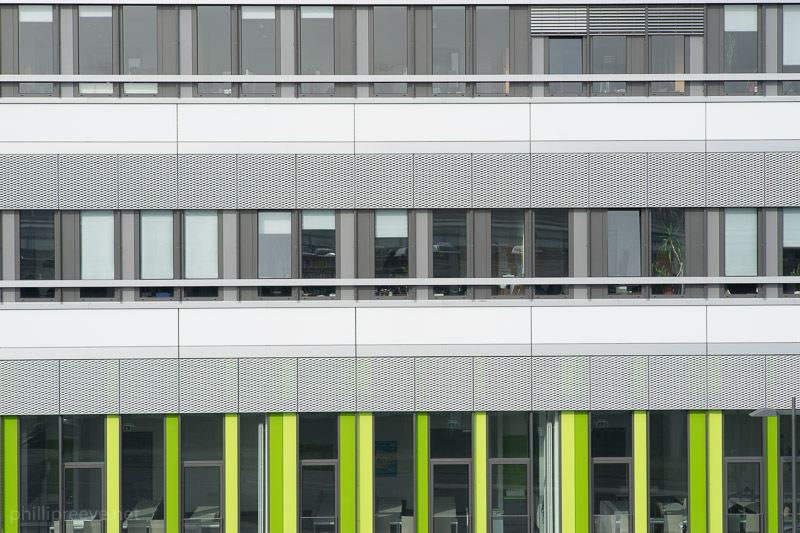
Chromatic Aberrations
There is some lateral CA and you will want to correct it. The Zeiss Sonnar 2.8/90 turns in an average performance here.
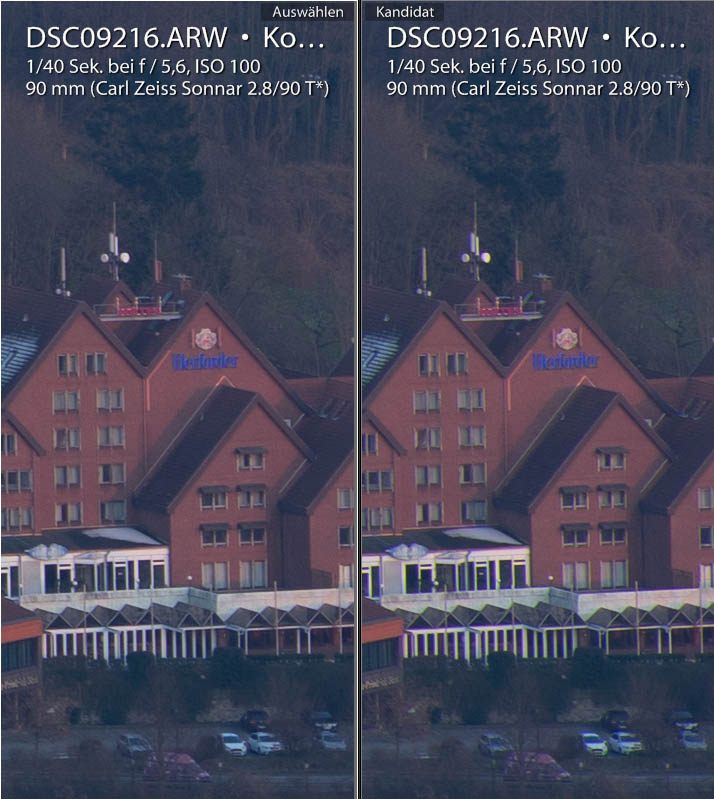
There is some purple fringing at f/2.8 which is gone at f/4.

Bokeh
In general the 2.8/90 has quite good bokeh with very smooth backgrounds.
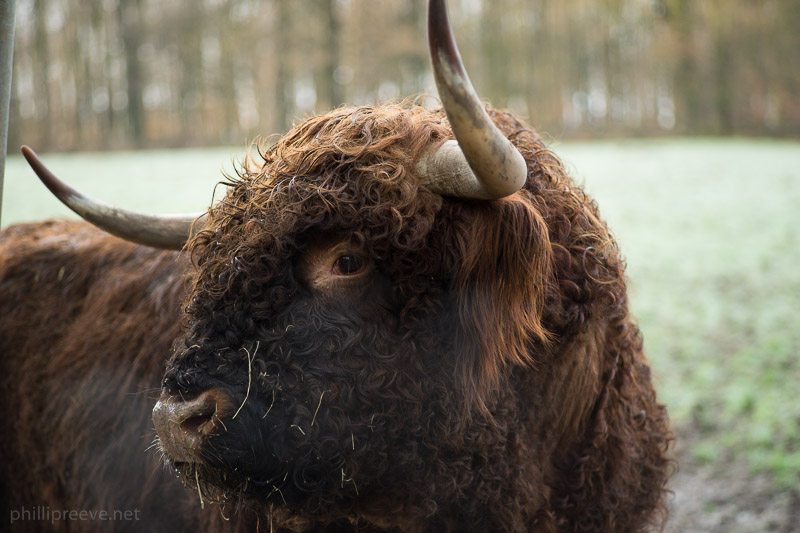
I had a few pictures though where I found the transition zone to be a bit nervous and a little distracting.
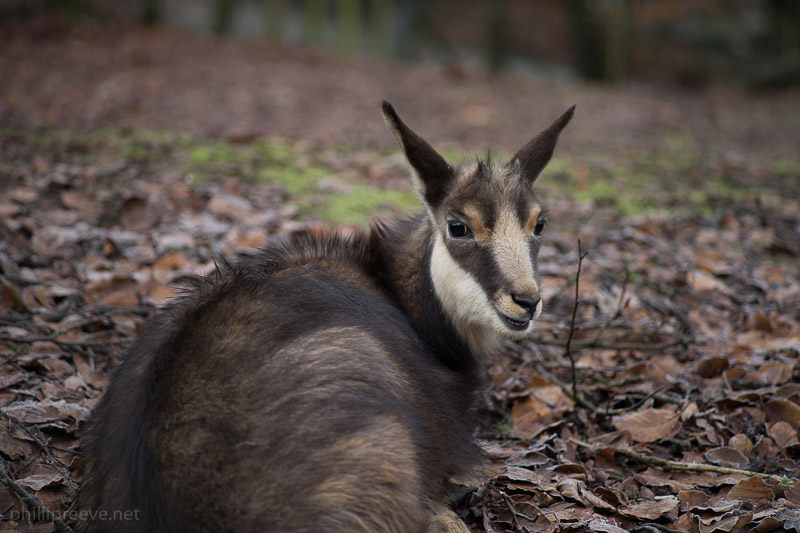
Thanks to 8 aperture blades oof highlights stay more ore less round stopped down.

Sunstars
Sunstars have 8 spikes and are not very well defined.
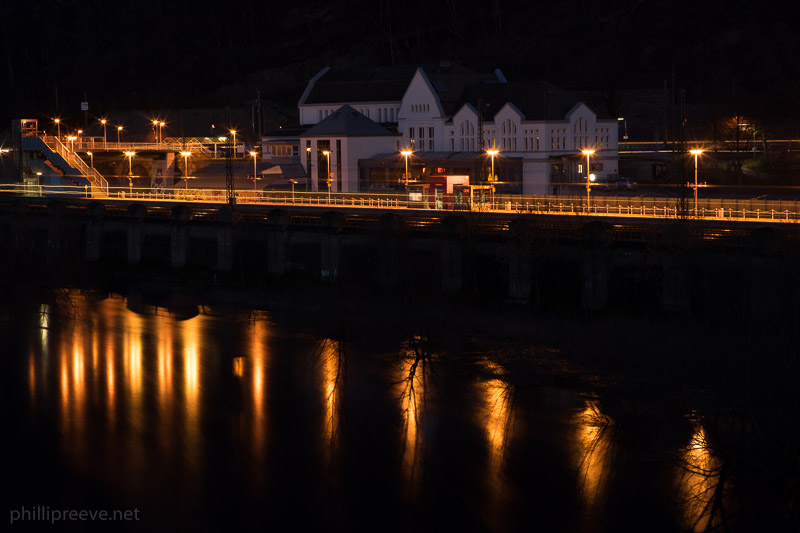

Sharpness
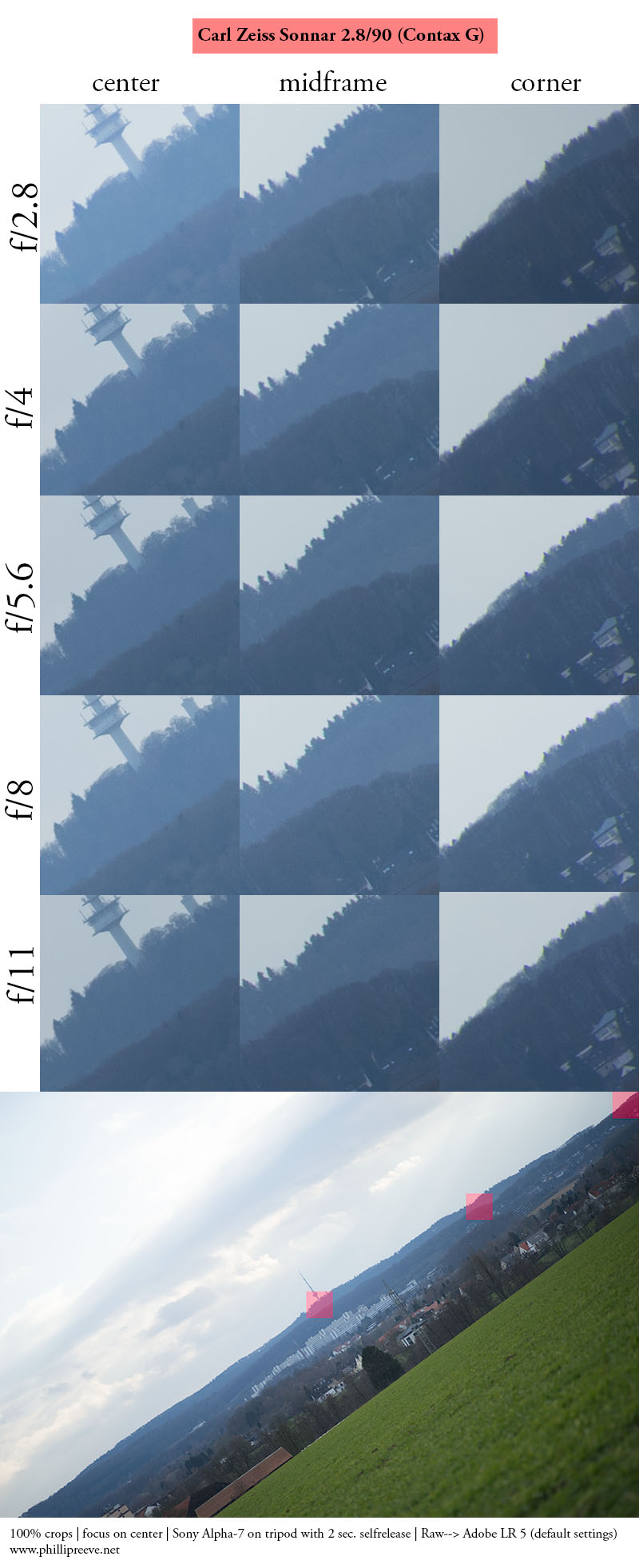
The full aperture series can be found at flickr.
f/2.8: Very good to excellent in the center very good in the midframe region and very good to good in the corners.
f/4: A little better everywhere.
f/5.6: I think the Sonanr is sharpest at this setting with most of the frame beein excellent, only the very corners are a bit weaker and “only” very good.
f/8: Maybe a tad less sharp but it doesn’t really matter, it is still a very strong performance.
f/11: A little less sharp due to diffraction.
At f/2.8 you don’t have to worry about sharpness, almost the whole frame is very sharp only the corners are a bit softer but still quite good. Stopping down doesn’t do too much, but if you are counting pixels f/5.6 will give you the best results.
Close Focus Performance
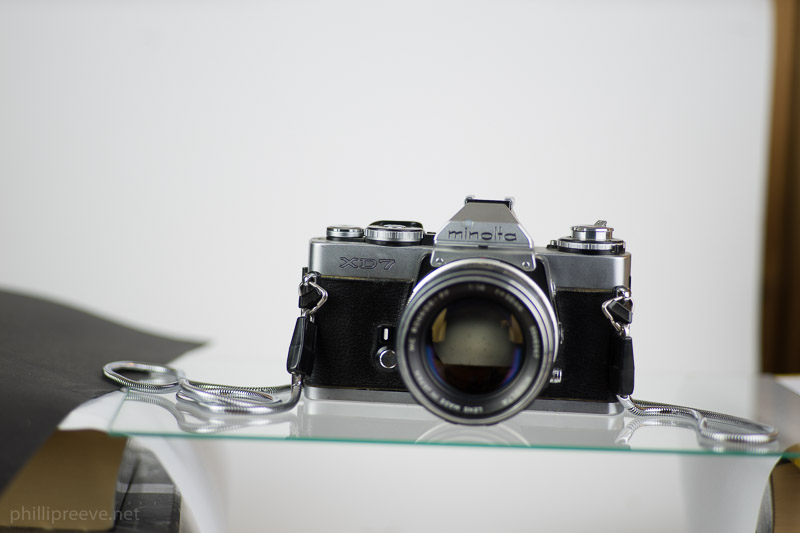
Sony a7II | Zeiss 2.8/90 | f/2.8 | full resolution
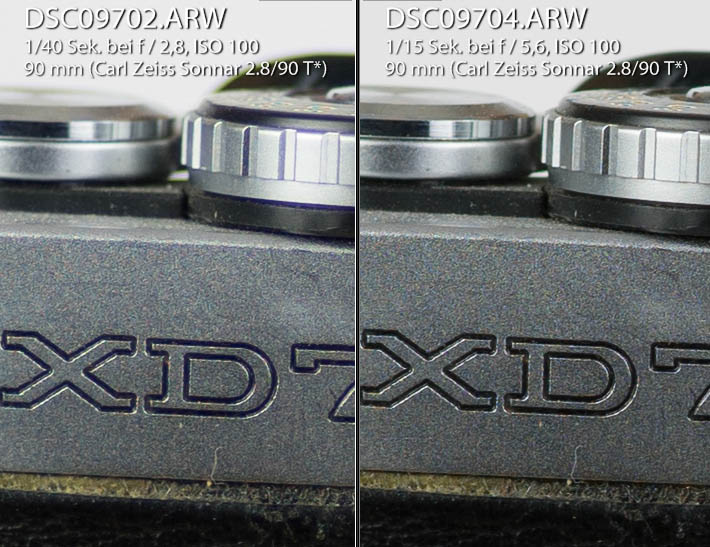
The Zeiss Sonnar 2.8/90 performed very well at the minimum focusing distance of 1m with very good sharpness from f/2.8 but you gain a little when stopping down to f/4. A reproduction ratio of 1:9 is nothing to talk about though.
Alternatives
Tokina 2.5/90 Macro – The Tokina is quite a bit heavier and has less effective coatings so contrast is always a bit lower. At f/2.5 it is a tad sharper in the very center but drops off quickly as you move towards the corners while the Zeiss is very sharp right to the edges. Stopped down the Tokina is excellent across the frame with zero CA and the Zeiss lags a bit behind but it still has more contrast.
Leica Summicron-M 2/90 pre-ASPH – Quite a bit heavier and much more expensive but certainly nicer to handle and with excellent bokeh. When your focus is on landscapes the Zeiss Sonnar is definitely the better lens but for portraits I would prefer the Summicron.
Zeiss Sonnar 3.5/100 – Without having compared them directly I think that the 3.5/100 is a tad better but it is also quite a bit larger, more expensive and has only 6 aperture blades.
Minolta MC 2.5/100 – The Minolta has less contrast especially wide open but nicer bokeh and handling. The Zeiss is a tad sharper wide open, stopped down sharpness is similar but the Zeiss has much higher micro contrast.
Zeiss C/Y 2.8/85 – I haven’t used this lens but the MTF diagrams for both lenses are very similar as is the optical design. So the quite a bit more expensive C/Y Zeiss should offer superior handling but it only has 6 aperture blades.
Conclusion
good
|
average
|
not good
|
The Zeiss Sonnar has all the qualities you would want in a landscape lens: It is small and light , it is very sharp, it is flare resistant and it has quite high contrast. The focusing isn’t fun but it shouldn’t be too much of an issue for landscape photography. The Zeiss 2.8/90 also works well as a portrait lens but here the focusing will be probably more of an issue.
If you look at the lens alone the price/performance ratio is awesome: Under $200 for a lens of this quality is a great deal if you can live with the focusing issues. The price becomes a little less attractive when you take the adapter into consideration. You should invest into a good quality adapter which will set you back at least $120 and the only other lens of the Contax G lineup which I can recommend on the a7 series it the Planar 2/45 which is not without issues so you will use that adapter for two lenses at most.
All in all the Zeiss Sonnar is a very attractive lens because it performs very well in almost any aspect, because it is very small and because it is quite affordable. Now of course there is a catch and that’s focusing. AF with the Techart adapter works okay sometimes but I wouldn’t want to rely on it and it is noisy. Manual focus with an mechanical adapter works but it is neither fast nor pleasant.
The Carl Zeiss Sonnar 2.8/90 usually sells for around $140-200 at ebay.com (affiliate link).
In Germany you can buy it for 130-190€ at ebay.de (affiliate link).
If this review was helpful to you, please consider using one of my affiliate links. I will earn a small commission on your purchase and it won’t cost you anything. Thanks!
Zeiss Sonnar 2.8/90 T* Sample Images
All images are processed in Lightroom from Raw. Many more full resolution samples in my Zeiss Sonnar 2.8/90 flickr album.

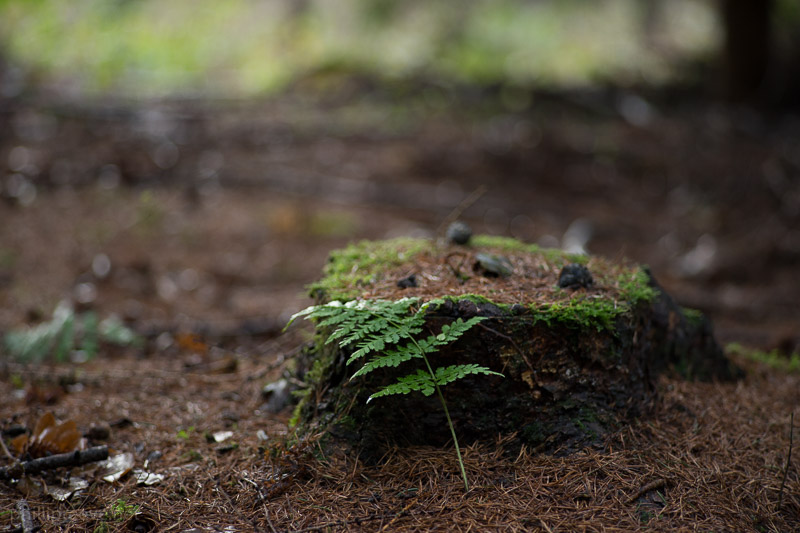
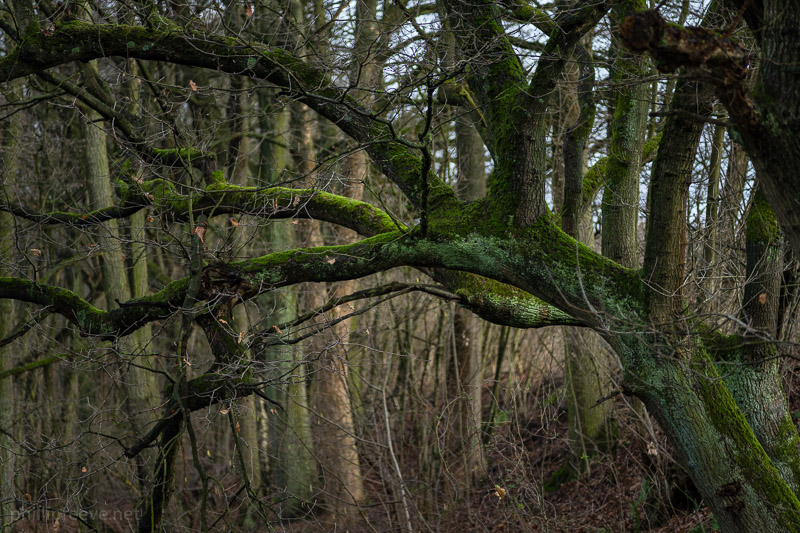

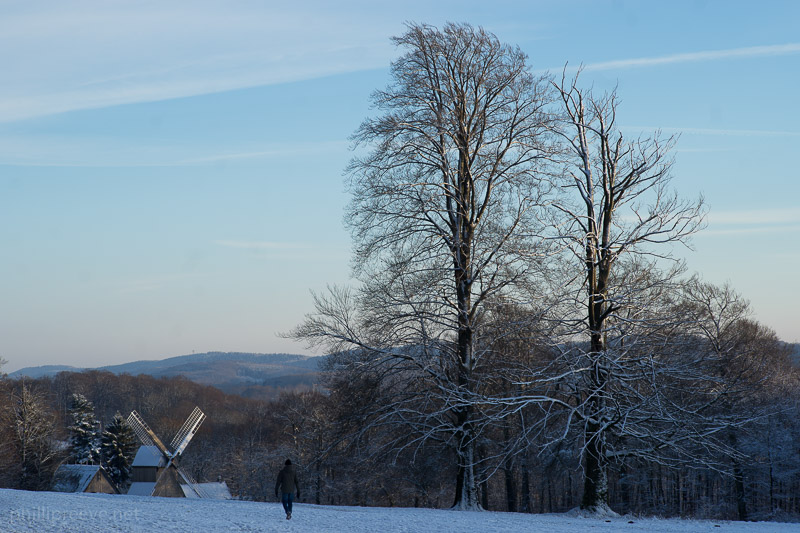

Other Articles
- My Facebook page
- Manual lenses on the Sony a7 – a beginner’s guide
- 15 affordable manual lenses for the Sony a7 series
- My other lens reviews
This site contains affiliate links. If you make a purchase using any of the links marked as affiliate links, I may receive a small commission at no additional cost to you. This helps support the creation of future content.
Latest posts by Phillip Reeve (see all)
- Review: Samyang AF 75/1.8 FE - April 12, 2021
- The FE-List now has 113 lenses on it - March 25, 2021
- 2020 – Year’s end review - December 28, 2020
There’s one more difference with the Sony Alpha 85mm f/2.8 worth mentioning: the lack of T* coatings. That’s probably the biggest change between the lenses and it does have a significant effect on the IQ performance.
Another issue with the Techart adapter is the need to keep its firmware up to date. Only the most recent firmware releases (post-October 2015) should be used on an A7II or A7rII, where AF is dramatically improved. On the A7rII, particularly, the accuracy and speed reduce the need for spending money on native lenses.
have you run any tests showing that the coatings are indeed less effective?
Hi Philip,
Thanks for the great review. Your pics are awesome as always. I was so close to buy this lens but the adapter issue made me back out. I’ve settled with Sony SAL85/2.8 which I use with the la ea4 (can be used manually too) and it has a sam motor so laea3 would work. It s awesome! Small, light but construction is bad (plastic). Quite sharp and great colors due to modern coating. Knowing that it sells for around 120€ used, it’s a great choice. Sure it doesn’t say Zeiss on it but it shouldn’t over estimated. I have no problem using it wide open. I know the plastic fantastic are not your cup of tea…:-)
Hi Stephen,
I had the same thought, maybe I will buy the 2.8/85 some day. The value is amazing although I didn’t like the focusing with the A7II, LA-EA3 and the SAL 70-400G which holds me back a little.
Did you try it with the latest firmware? Should be okay. Although la ea4 is faster even with latest firmware. I have no problem using the lea4. Another option I really like is sigma 70 f2.8 macro ex. Sharp as it gets (too much for portrait) but slow focus.
the Nikon 105 2.5 is a little longer, a little faster, and yields fantastic images.
and it is twice as heavy but i agree, it has a very good reputation and I would certainly like to give it a try some time
I decided to give this lens a try about 2 months ago (I refer to it as the “G90”) as my lightweight-backpacking tele option paired with the Sony FE 28mm F2. I had previously used the Minolta autorokkor 100mm F3.5 and the Sony 85mm F2.8. In short, the lack of adequate coatings for flare in real world use and handling were a drag for me (though both lenses are excellent, the 85mm F2.8 is actually sharper than the G90). After researching the G90, it appeared the tiny diameter, small weight, and modern coatings make it a theoretically perfect hiking option.
For a couple comments on manual adapters, I’ve picked up a Fotodiox adapter (which is a knockoff of the Kipon), and the actual Kipon. My experience with the Fotodiox is that it works fine in practice for $50, but can “catch” in rapid focus changes. The biggest problem for me is that the attachment to the camera mount is quite tight – making lens swapping difficult. The genuine Kipon, however, works perfectly. I really don’t see meaningful downsides between this adapter and a regular manual focus lens, except for the narrow ring and for the lack of distance markings. It is smooth and easy to use. I have used it hiking and photographing my daughter running around, and have not found the manual focus situation to hold me back any more/less than a normal manually focusing lens in the short time I’ve had it.
When comparing it with the Sony FE 55 F1.8 (which I am trying out, and also has the Zeiss T* coatings) from the same shoot, I believe the G90 renders slightly cooler/more magenta, but there is a similar level of very high contrast and behavior with backlit photos. Tweaking the white balance makes images from these two lenses “feel” very similar to my eyes.
Thanks again Phillip!
I have a Minolta Rokkor 90mm f/4 in M mount and the images are spectacular on my A7 II.
there are certainly too many nice lenses 😉
I prefer the smaller, very sharp Nikkor 85/f2. The classical portrait lense.
I was thinking the same thing the whole time reading this article. 85mm Nikkor f/2 is a gem, super sharp, small and compact, nice bokeh and excellent sun stars.
Strange, according to Bjorn Rorslett, that lens is not good at all. The Nikon 105mm F2.5 is superior in every way other than size. Though I think the Zeiss is probably a tad better. The Nikon doesn’t see across the frame sharpness until F4.
Hi, nice review. I own 21-28-35-45-90 Contax G lenses, so I recently purchased the expensive Tech art adapter: ridicoulous slow autofocus the few times that works and not accurate at all, also it crashed the camera. After couple of days testing, I sent it back. The seller did not object anything stating that the reliability of the new TA-GA3 is really poor. So I continued with the old cheap and accurate manual focus adapters. Hope new interesting Techart solutions will be (much) better. Regards.
did you use the current firmware and which camera did you use? I used it on the a7ii and found it to be useful for certain scenarios
Hi Phillip,
thanks a lot for reviewing! Now I know why I love it!
Regarding the “awkward” manual focusing: well, it is the original Contax/Nikon S way for wideangle and normal lens from the 1930s to 1950s. Generations of photographers were used to it, and at least Nikon claimed that focusing was “a breeze”. I agree that I would prefer a more conventional helicoid also, but it can de done and it is definitely not a show stopper for actual photography (but maybe for the haptical joy…). When I see all the photographers raving about “cheap and incredible” Samyang lenses, which mostly have incredibly inaccurate focus ring adjustments (my own Samyang 14 mm shows infinity at 1,50 m…), I really value my old gems! Btw., if you would like to test a Nikkor 2.5/105, no problem (or Nikkor 2/85 RF, 1.8/85 F, 2/85 F…)
Kind regards,
Uwe
For me the experience is certainly an important aspect of a lens, otherwise I would probably use nothing but AF lenses. But I agree focusing can be done.
Thanks for the offer but I have currently way more lenses than time to test them 😉
Hallo and thank you for this great review! (and the other review´s(-:)
As the Sony A-mount 85mm 2.8 SAM is part of the comment here, i tested the difference between the Contax G 90 today.
I would say they are different lenses from judging the output.
The Contax G90 has a little bit more contrast and less CA than the Sony. I would say also the Sony is much warmer and a little bit softer in a good way, but not less sharp…much better for portrait than the Contax.
For product shots or landscape the warm rendition and the more CA from the Sony could be disturbing.
Yes…… the Contax G90 is best for landscape while the Sony is great for people shot´s.
thanks for sharing your experience 🙂
Hi Phillip, Given the XD7 in the background (my favourite film camera), have you tried the MD 85mm f2? I would be interested to know your thoughts on how that would stack up. Its light and super sharp in my experience but I dont have anything to compare it to… Thanks, Nick
I am using both Contax 45/2 and 90/2 on Sony A7 ii with Techart III adapter and latest firmware on both A7ii and Techart. I find AF speed to be more than adequate. I recently took a few shots at a birds of pray and dolphin shows in Gran Canaria and the AF was spot on. I see very little difference in the AF performance between these lenses and native FE (I have 28/35/55) with the exception of eye AF. You need to make sure you switch setting on the A7ii to PDAF for Legacy lenses to take advantage of AF improvements in latest Sony firmware. Example shot from bird show https://www.flickr.com/photos/shamrakov/23962084260/in/album-72157660992694653/
Thank you for sharing this very fair and informative review. I (still) own a Contax G2 film camera with 28/45/90 lenses, and the idea of getting three Zeiss lenses for my Sony for the price of a Techart adapter was overwhelmingly attractive. I bought an earlier model Techart adapter which definitely had issues, but those all appear to be solved in the Mark 3 model with the current firmware.
This is probably obvious from context in your review, but use these lenses as they were intended for an aperture-preferred, autofocus rangefinder camera. Set the dial on A and leave it there. Set the A7 camera body to the maximum aperture and leave it there (the Techart Mark 3 adapter correctly reports max aperture, focal length, and full-frame). Use the physical aperture ring to control depth of focus and shutter. Let the phase detection autofocus do the work. Manual focus is possible but tricky due to the small size and awkward location of the MF knob on the Techart. {To be honest, manual focus was awkward on the G2 film camera, too.}
It’s all about expectations. You don’t get a Porsche-like, completely modern auto-everything E-mount lens with this combo. You do get a Zeiss lens with quite respectable performance for Kia money.
Hi Andy,
thanks for that comment, it exactly tells how I see it. I also do not have problems with the Techart Model 3 adaptor, firmware updates are a breeze without needing a special “dock”, and AF with A7II and A7RII is much faster and much more reliable compared to ALL my manual focus solutions (and I have many) for all situations where movement might occur. For portraits, I surely prefer AF. Maybe I am a lousy manual focusser!
As for the many people here liking the Nikkor Ai(S) 2/85: my “origin” is from the Nikon system since a very long time, I do have that lens (also several generations of 2.5/105). And yes, I like it. BUT the G-Sonnar at 2.8 is sharper than the Nikkor at the same aperture, and again AF for portrait and family photography is really helpful.
Regards,
Uwe
Hi Phillip! Thanks for your very good review, now I’m decided in keeping my Contax 90/2.8 which provides grest images with my Sony A7II! I use an Ulata ( chinese ) manual adapter, which has a wider than usual focus ring and makes manual focusing quite easy. I miss the Exif data and AF in some situation though, and checking on the Techart adapter on eBay, I found two models for the same purpose: the TA GA3 and the DEO TA GA3 ! Now I’m confused, since I couldn’t find any explanation on what’s different between the two. Can you help?
Thank you
no idea, sorry
Lucas,
they are the same. Producer is a company called KPLIANG, and they call their offerings sometimes just Techart xy, sometimes DEO xy and sometimes use even funnier names (they also have Canon EF adaptors, sometimes calling them EOS-NEX III, sometimes “DEO Saker Falcon Lite”, etc. – always the same).
So TA GA3 = DEO TA GA3. More important than the “name” is the version – be sure to have Mk III, this is vaild for both Contax G and canon EF adaptors!
Regards,
Uwe
Hi Phillip.
Great review. Love your work 🙂 I have this lens along with the Techart adapter. I was wondering if you or anyone out there have some instruction on how to update the firmware. The original instructions are quite hard to follow
Here’s a pic I took with my A7II and 90/2.8
https://www.flickr.com/photos/76440931@N05/23277304861/in/datetaken-public/
Good review Phillip.
I’m still on the fence because of the focusing experience, however, as Lucas Macedo (above) says, the Ulata adapter, with it’s wider focus grip, is getting some very good reviews.
I’m also interested in the 45/2, so I do hope you get around to reviewing that one sometime too.
G45 is nearly done.
On Wednesday Yannik and I met up and compared about a dozen 85/100mm lenses the G90, MP 100, C/Y 3.5/100 and Oly 2/100 among them. We only had two hours so it is just a brick wall and some background bokeh but it could be interesting for you none the less
Look forward to both/all results ;o)
Thank you for your reviews.
But this one was special for me: found a Sonnar (like) new locally on kijiji.ca, bought a manual Fotodiox Pro only for it, I hope to use it while I save for a new Loxia 85.
Cheers
I’ve been using this lens for a couple of weeks, bought it in spite of already having an, um, well rounded lineup at around this focal length.
I’m using a Fotodiox adapter. It says “Pro” on the adapter, though that isn’t in the designation online at least at B&H. It was $90, and the focus is quite nice. Not as nice as a really nice lens, but not bad at all.
What I’d add to your review is that the character of the lens is rather aggressive. It looks like the image has been sharpened without applying any. The lens does have good sharpness and resolving power, but this character seems to be something else. Sebboh mentioned it in his profile, I think, and I see what he means.
I have tried the normal fotodiox adapter ~60€. To tell the truth I shot 3 times and send it back. It has a completelly unaceptable quality, spilling oil, hard and non regular pull in the focusing ring.
I tried Fotodiox and Metabones adapters. Metabones is much better. Still, a very unpleasant feeling. I thought that with the metabones adapter everything should be all right but it is not. A pity as the lens is very good in my opinion.
Thanks for sharing your experience 🙂
Can you elaborate a bit more on the focus experience of both adapters?
Hello Phillip. I can give my honest opinion (maybe unqualified). Firstly, I must say I am interested in the Contax lenses, not only because of their convenient price, but also and above all because of their small size. The Fotodiox adapter is manufactured in an medium quality which is coherent with its average price. Pitifully, the focus ring, even when it is non connected with the lens, works non-uniformly. Namely, depending on its position the focus ring offers a different resistance, that is a non-uniform momentum. The adapter spills grease, so that the lens, in its connection area, got also stained with lubricant. The same with the focusing bolt which connects with the lens focusing mechanism. Also leaks grease. In my opinion an unsatisfactory adapter. Metabones adapter is manufactured in a better quality in my opinion. This is also coherent with its higher prize. The wheel gives a pleasing quality feeling. Pitifully, when focusing (with the lens mounted and connected with the camera) a certain inaccuracy in the movement appears. This inaccuracy is patent specially when inverting the rotating direction. A differentiate resistance to turning appear close to infinity. This does not look to be connected with the adapter but with the lens. As far as I have understood, with these lenses one can focus pass infinite, similarly as what happens with FE 55mm. In the area closer to infinity the mechanical turning resistance simply changed, at least with the copy of the lens I have available. In summary, I did not got a pleasing experience focusing. Probably, if you need or want the lens for some special (optical) reason you may live with it, but I make photos for my pleasure so probably I will consider other lenses. Pitifully I do not know of any convenient option comparable in optics, size and prize at the moment, as summicron is much more expensive. Maybe with Techart adapter everything is much better?
Thanks for elaborating. As written in the review the reports I have read so far were more enthusiastic.
There is on other way and that is to transplant the optics into another helicoid. A bit radical but if you want to use this optically really attractive lens it might make sense.
Thanks for sharing this procedure. Radical indeed :). Still, what about techart? do you thing it is worth trying?
As said in the review: It works quite okay but it has limitations. I prefer manual lenses though 😉
hi,Phillip
Wonderful review!I think the 90/2.8 is the one Im looking for. But Im wondering if this lens works good on Sony a6000 with the TA-GA3,I mean,AF good?
As far as I understand it doesn’t really work with the a6000, only the a6300 and a6500
Hi Phillip, wish you a very happy new year and thanks for all your articles.
I wonder how leica 90/2.4 performs in comparison with all 90 and 85 you have looked at. That would be much better than comparing much heavier and expensive 90/2.
I’m using Sony 85/1.8 but would still prefer something lighter.
Well I don’t have one so I can’t really say 😉
Hi Phillip,
May I know where can I purchase the 1.5 PCX for my Contax G lensens…21mm and 35mm. Thank You.
All the information is in this article.
Anybody uses Marumi Achromat 5+ diopter or Raynox 250 with this lens? Would love to know what the focusing distance would be with these closeup adapters and what magnification achieved (1:1?)?
btw bought this lens after reading all of reviews on this blog on 85-100mm lenses, happy with the choise been using it with Ulata adapter and it works nice enough, thanks…
Cheers, A.
If you guys ever have a chance, I’d love to see a comparison between this lens and the old Voigtlander 90mm f/3.5 APO-Lanthar SL-II.
Just placed a bid on the M39 version of it 😉
And how ? )
Phillip, what adapter do you are you using on this?
My adapter was a cheap noname adapter which was really annoying to use so I can’t recommend it. By now I have had mine converted to a proper helicoid but it was done by a kind reader who doesn’t offer the service anymore.
what about comparing to zuiko 90mm f2 ?
I have been using a fotodiox adapter, and like other people have stated it isn’t very uniform with the focusing.. That being said, it goes for $30 and very usable.. I have no complaints
It’s a good review article, I’m a Chinese user so the next thing you see may feel like Google Translate (i’m sorry about that) Not long ago I bought the Contax G90 for $147, which is a great shot and can afford it, but I noticed that the F2.8 aperture doesn’t seem to bring the intense background blur required for portrait photography, and that its color difference is really too strong to see the thick purple edge with a little sunlight. Thank you for your article